Expanding, evolving, exploring, and enchanting are all applicable when describing the orbit of All Them Witches. Since their 2016 Rig Rundown, the quartet have continued pursuing their sonic mission, unbound by anything but regeneration. Their never-ending musical mutation has yielded three more individualistic, intrepid releases since our last check-in.
Sleeping Through the War, in 2017, explored more purposeful, mystical songcraft cloaked in hypnotic, rambunctious rock. For 2018’s ATW, the band’s IV-like retreat (substitute Headley Grange for a Tennessee cabin) extracted a doomier, more chaotic side A equally matched by a side B that’s a psychedelic painkiller. And 2020’s Nothing as the Ideal shows the temporary power trio (drummer Robby Staebler completes the line-up) striking a levitating balance within a menacing, mortar of metal that binds and anchors their emotive, effervescent excursions. (Drop the needle on closer “Rats in Ruin” and let it wash over you.)
Just before their sold-out show at Nashville’s historic Ryman Auditorium (on Halloween, no less), Witches guitarist Ben McLeod and bassist/vocalist Charles Michael Parks Jr. welcomed PG’s Chris Kies onstage to re-chronicle their setups. The resulting conversation covers their modified war horses, deciphers their esoteric stacks, and reveals the secrets of the “doom broom.” Plus, we get hip to new builder Elad Shapiro of Dale Amps.
[Brought to you by D’Addario 360 Rechargeable Tuner: https://www.daddario.com/NexxusRR]
McLeod’s Monster
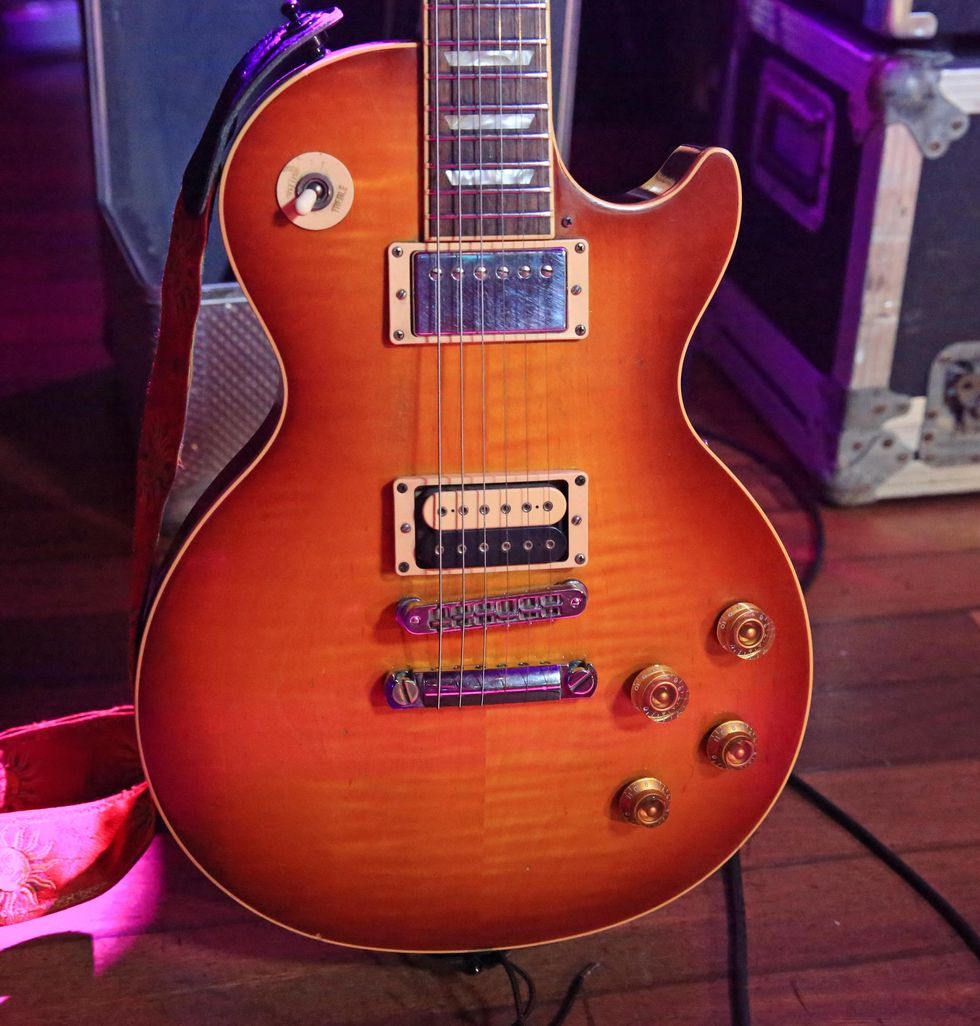
Starting off the Rundown, just like the 2016 episode, we have Ben’s beloved 2010 Gibson Les Paul Traditional. He’s done several mods to make this instrument a third appendage. McLeod had removed the stock speed knobs, opting for witch-hats (of course). However, he’s a big proponent of precise volume manipulation, so he put back the speed knobs for the two volume controls. He replaced the plastic nut with one made of bone. He says it not only helps with intonation but gives the guitar a silkier, smoother sound. The stock bridge Classic ’57 humbucker was swapped out for a DiMarzio Super Distortion. And, although it was mentioned last time, it’s worth noting that the pickguard was removed because McLeod is a big fan of Duane Allman and he didn’t feel like covering the full burst.
All the guitars take D'Addario NYXLs (.010–.046) and are typically tuned to D standard or drop C (C-G-C-F-A-D). And all his guitar maintenance is handled by Eastside Music Supply tech and PG contributor Derek Ness, who authored our 2019 edition of No-Brainer Mods.
Knaggs Nailed It
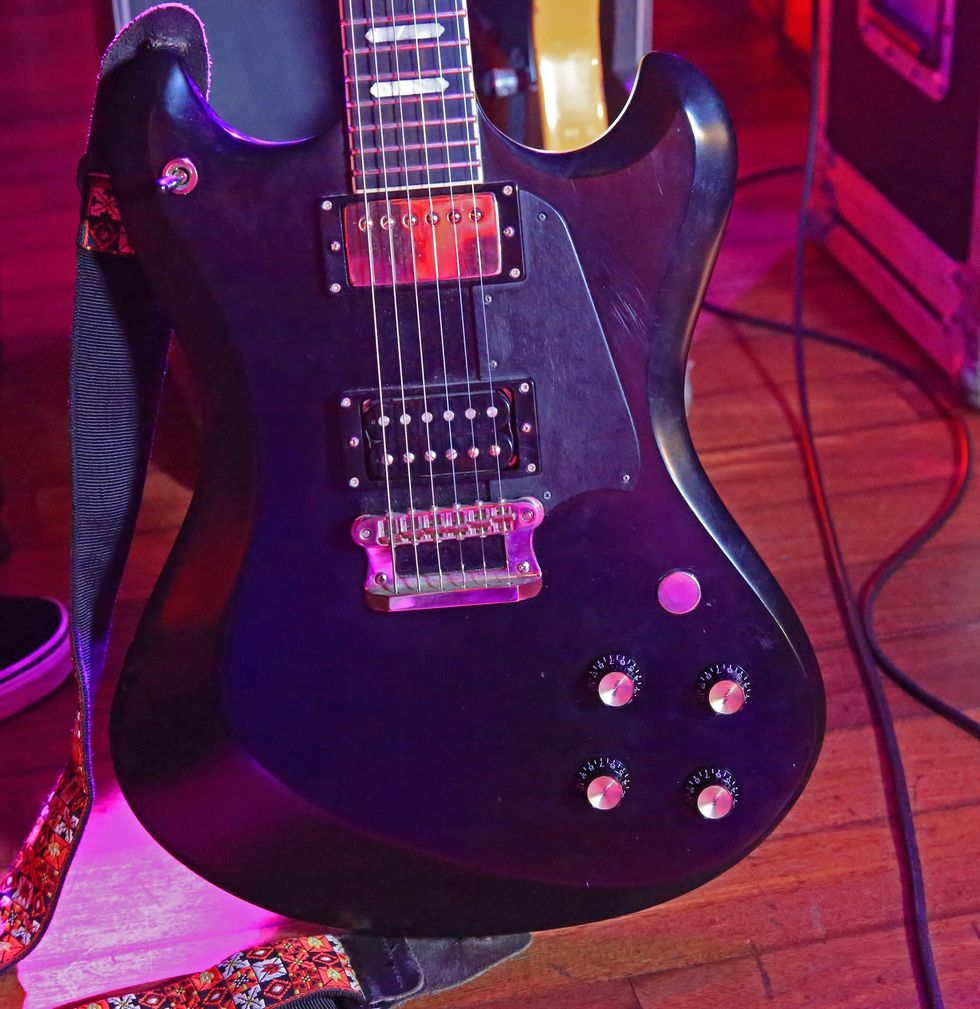
When a custom builder like Joe Knaggs comes calling as a fan, you answer. The Maryland-based luthier wanted to send McLeod a few guitars and the 6-stringing Witch said, “absolutely!” The SG-ish Honga is his favorite. “This guitar has an ungodly amount of midrange, and it is so awesome,” gushes McLeod. “It’s an amazingly, well-built guitar.” The set-neck, double-cutaway axe has a 24.75" scale length and came with Bare Knuckle Mules. The lone mod on this guitar (again done by Derek Ness) was swapping the pickup selector from below (near the control knobs) to up top, like Les Pauls.
Roy Marks the Spot
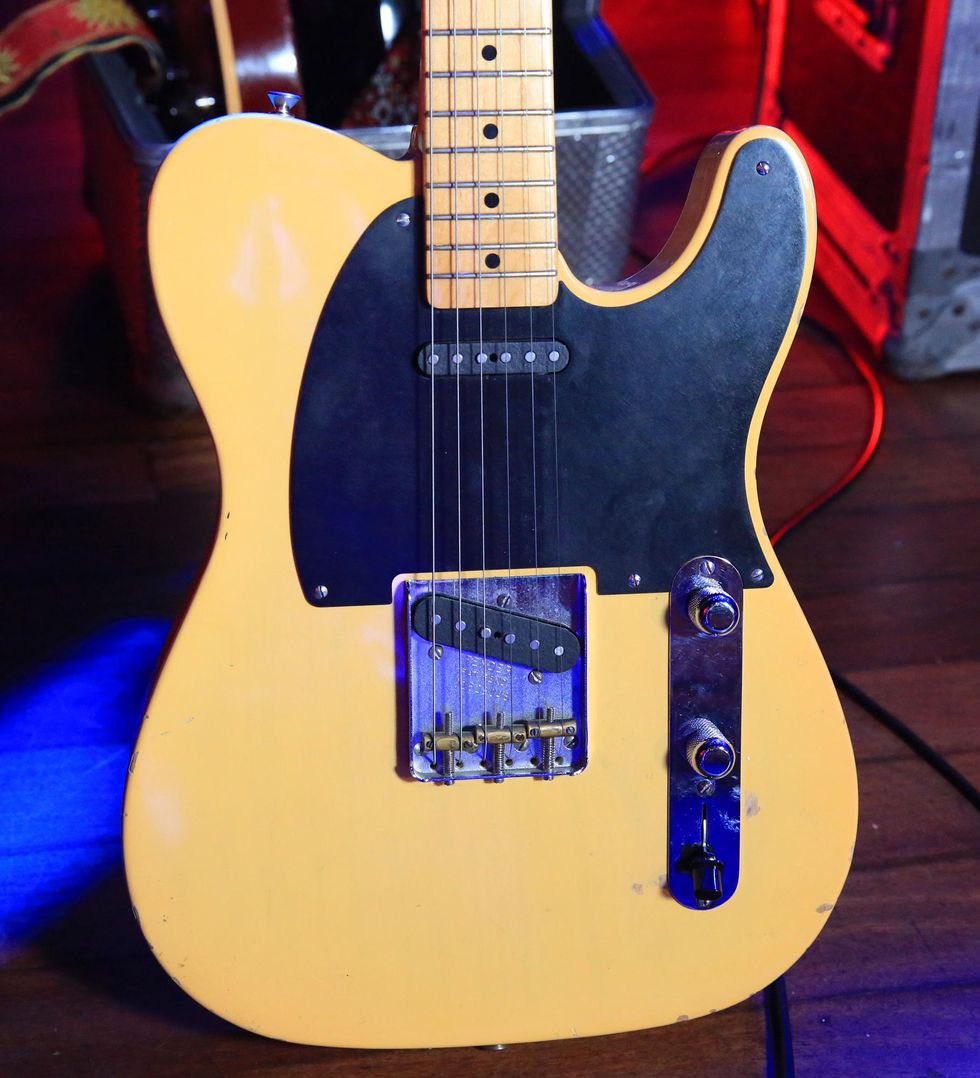
“I’m obsessed with Roy Buchanan,” admits McLeod. “So, I had to have a guitar that looked like his, with a butterscotch blonde finish and black pickguard.” This bombshell is a Fender American Vintage ’52 Telecaster. Ben reversed the control plate and put the volume knob ahead of the tone control, so he had easier access to the volume knob for county-ish, pedal-steel bends. He also dropped in a set of Fralin Blues Special Tele single-coils because he heard that his current favorite picker, Kenny Vaughan, loves them. For ATW, it’s primarily a safety net, but when he’s home he plays this T the most. (And for a taste of how it sounds, spin Ben’s surf-western side project El Castillo.)
Slippery Slides
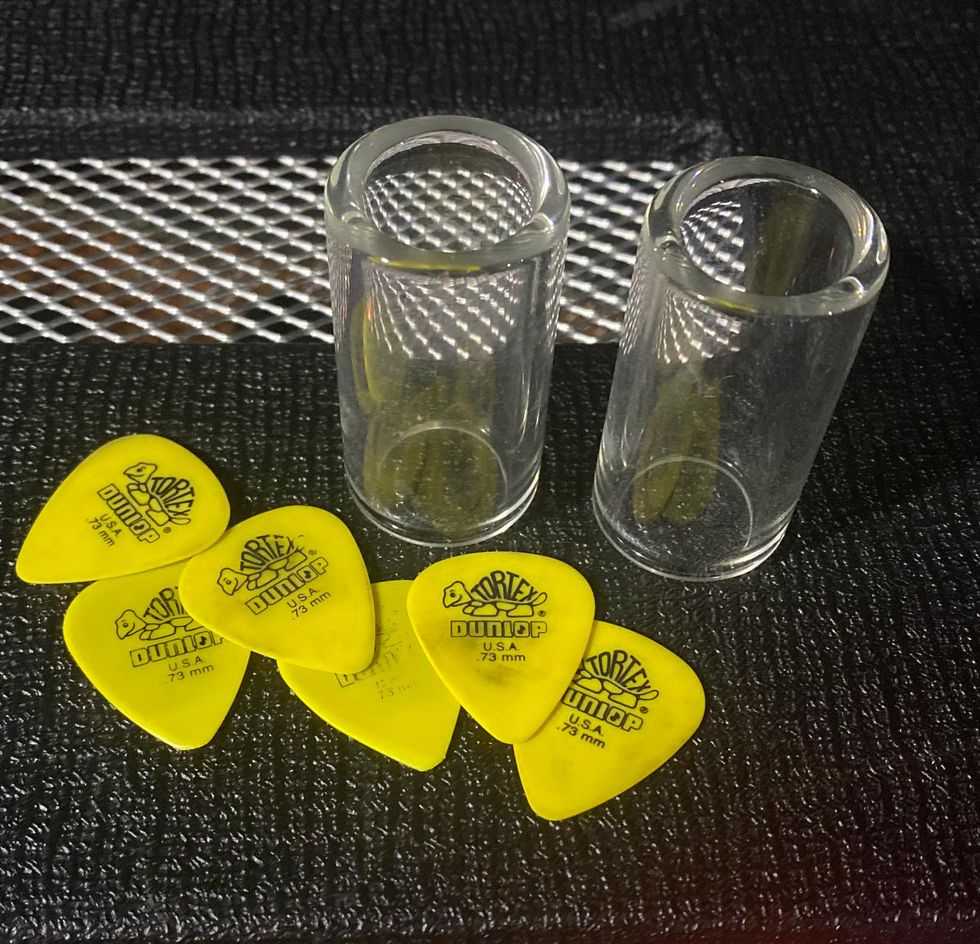
For songs like “Rats in Ruin,” McLeod will grab a Dunlop Heavy Wall Large Glass Slide (213), and he attacks the strings with Dunlop Tortex .73 mm picks.
Fourth-Grade Fender
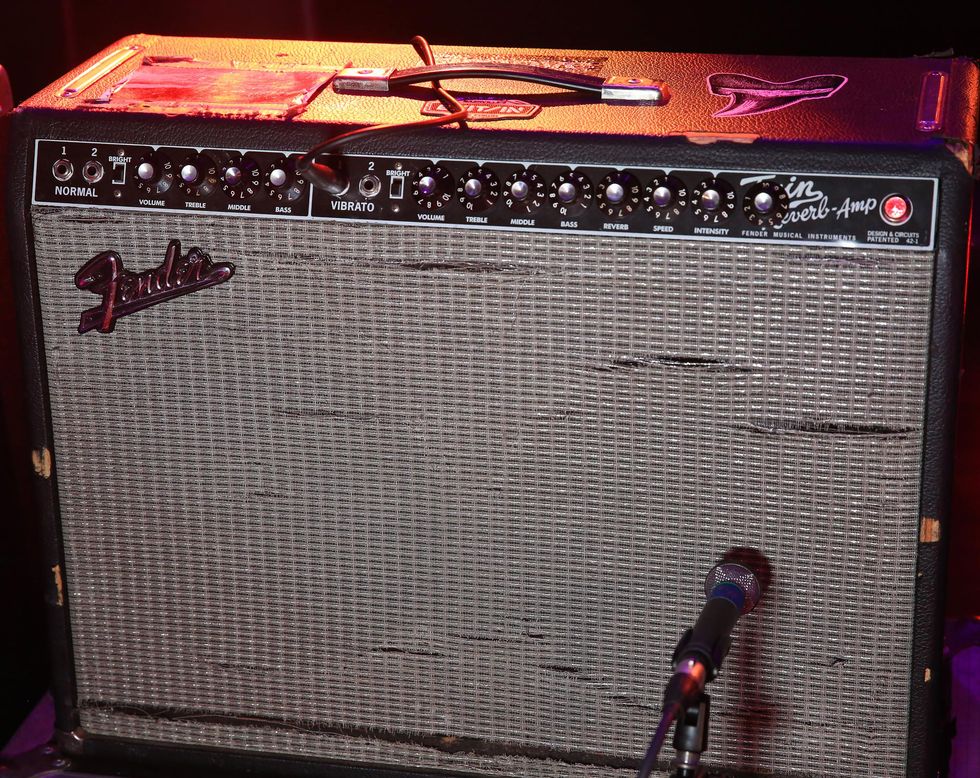
This is still the same Fender Twin Reverb reissue Ben was using in 2016, which he’s been blasting through since fourth grade, when he got it for Christmas. He’s had it outfitted with a master volume knob (far right control) so he can dial back its roar at home. (He leaves it wide open when onstage.) Another alteration was removing the pair of Jensens for a couple of alnico Warehouse Guitar Speakers 50W Blackhawks.
The Gain Monster
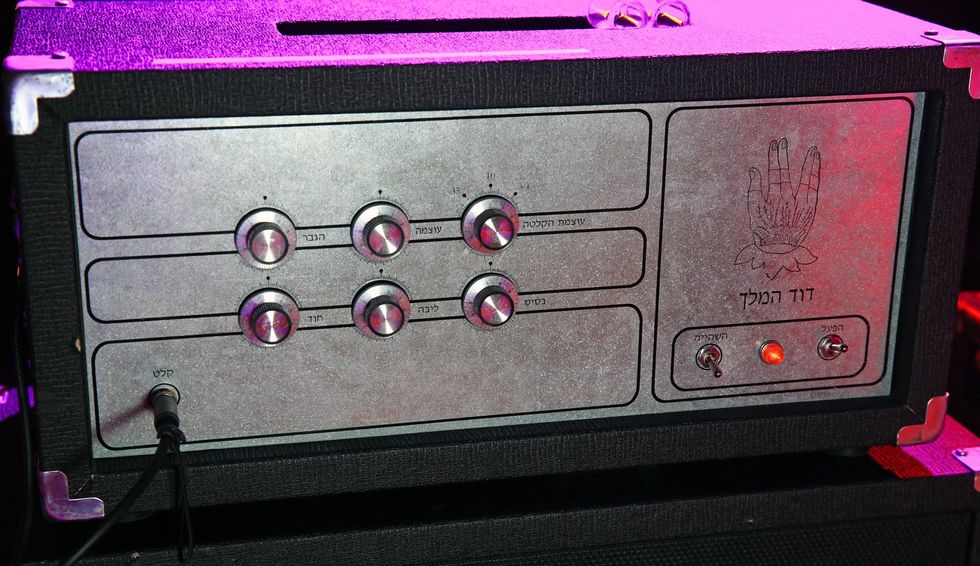
This mysterious box of rock is a very angry interpretation of a 50W JCM800. Built by Nashvillian Elad Shapiro (Dale Amps is the company), it features a Hiwatt output transformer and Mullard EL34s. A 2x12 open-back Dale cab is loaded with a set of Warehouse Guitar Speakers ET65s. In flight, he uses either the Twin Reverb (clean) or the Dale (heavy). (During the Rundown, Ben alludes to a forthcoming 100W version that will be used on their winter run and into 2022.)
For those who can’t read Hebrew, the controls are as follows: (top, from left) preamp gain, master volume, and presence, while below you have treble, mids, and bass.
Lucky for us, we had the amp builder himself on hand, and here’s what he said about his creation: “It’s a 4-stage, high-gain amplifier with three EL34s in the output, three 12AX7s in the preamp, and it has a Hiwatt Partridge output transformer. I like to use them because they’re very open and chime-y sounding. The biggest difference between this and a JCM800 is that it doesn’t have a cold-clipper stage—how the tube is biased causes it to do something unpleasing to my ear. And it cleans up real nice when you ease off the volume.”
6-pack and a Wah
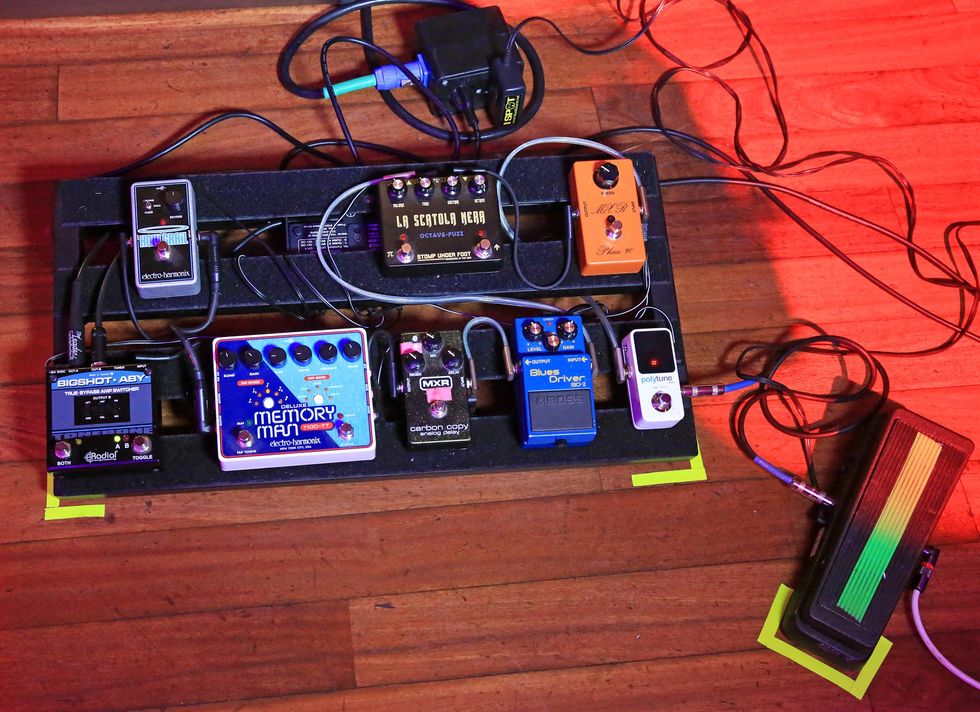
As diverse as the band’s sound can be, Ben keeps his stomps relatively straightforward. His sweet baby Boss BD-2 Blues Driver still finds a home on his board. The rest of his colors come from fresh friends: a duo each of Electro-Harmonix (Holy Grail and Deluxe Memory Man 1100-TT) and MXR (Carbon Copy and Phaser 90) boxes, and a Stomp Under Foot La Scatola Nera. This pedal was a result of a request from Ben to SUF’s Matthew Pasquerella “to have a new and different fuzz from his Alabaster pedal, and add an octave.” Off to the right he has a Dunlop Cry Baby 95Q wah that replaced his Vox V847 Wah because he prefers its wide sweep and not having to engage the circuit, thanks to its auto-return switching. The Radial BigShot ABY True Bypass Switcher controls the amps, while the TC Electronic PolyTune 3 Mini keeps his guitars in check.
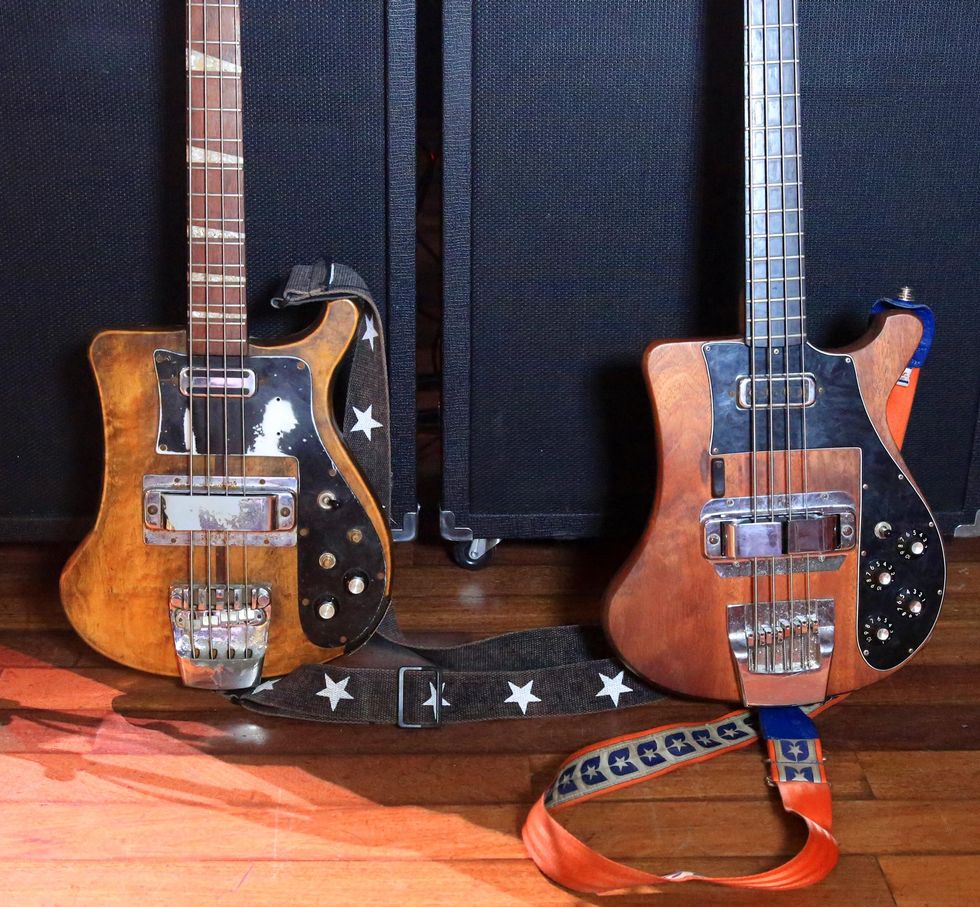
In our last Rundown, we picked our jaw off the floor and left scratching our head when first encountering bassist Charles Michael Parks, Jr. amputated 1972 Rickenbacker (left). At that time, he used the bewildering 4001 most of the night. The only sub happened when going for his 1966 Rickenbacker 450/12 for Dying Surfer Meets His Maker songs Call Me a Star” and “Talisman.” As the story went, the guy he bought it from was left-handed, and he chopped off the upper bout, slashed off some of the headstock, and flipped it around to play lefty. Parks got the bass super cheap, had set it up to play right-handed, reworked the electronics, shaved the bridge and moved it back, and then outfitted it for a proper stereo jack. It usually has D’Addario Half Round (.050–.105) strings. And, as Parks puts it, “it’s a battle axe. If being dragged behind a truck had a sound, it’d be this.”
Since then, he had budding luthier and tech whiz Derek Ness build him a more dependable, road-worthy replica of the oddball (right). Besides the original’s brighter toaster pickups and its frayed look, the biggest difference is that the Ness Custom model has a Hipshot BT3 Bass Xtender detuner.
Daddy Played Bass
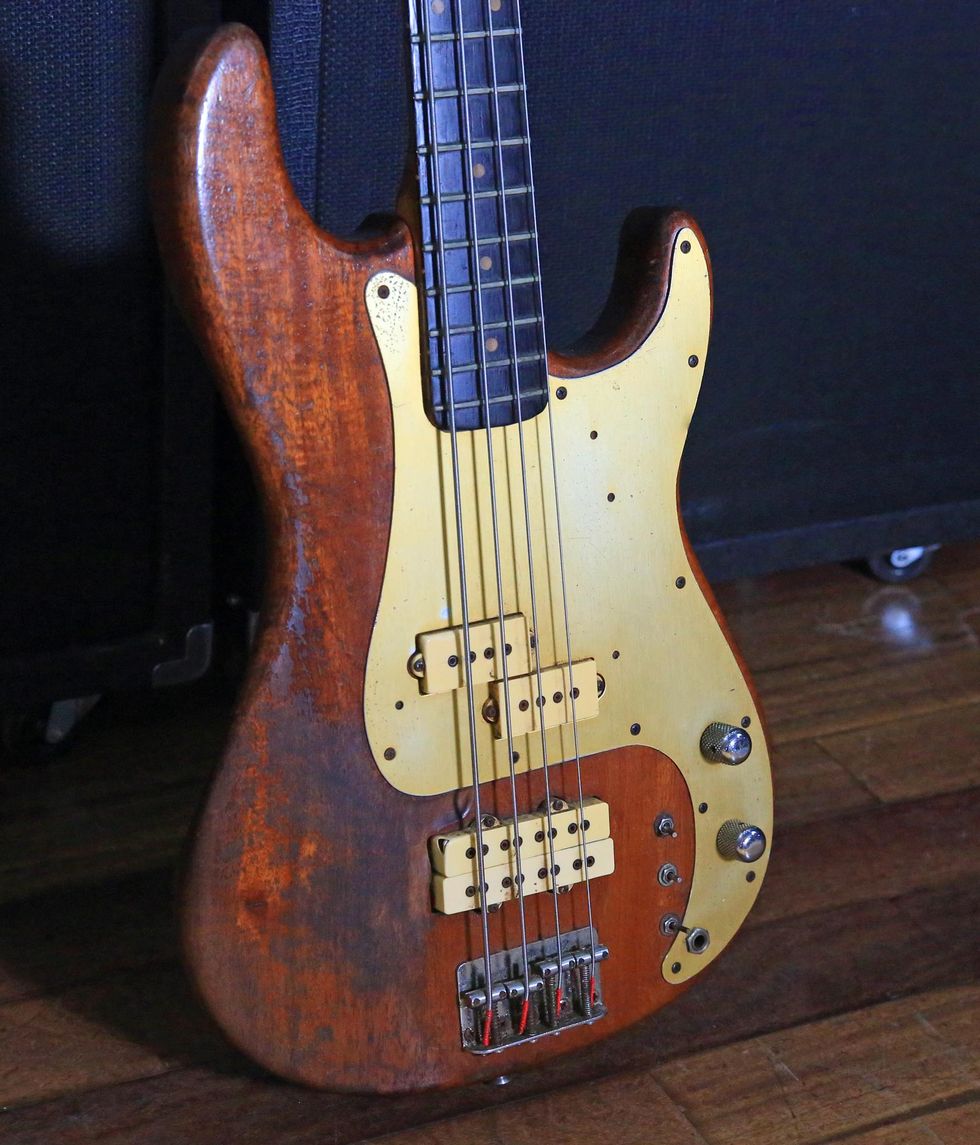
This 1962 Fender P bass was bought by Parks’ father in 1965 and was recently gifted to him. His father’s friends were sound engineers and, like the P’s designer, didn’t play the instrument, but they heavily tinkered with its circuitry by putting in a Jazz bass pickup and additional switching. Shortly after purchasing the P, his father smashed the switches and gave it a bizarrely beautiful sound.
The Groove
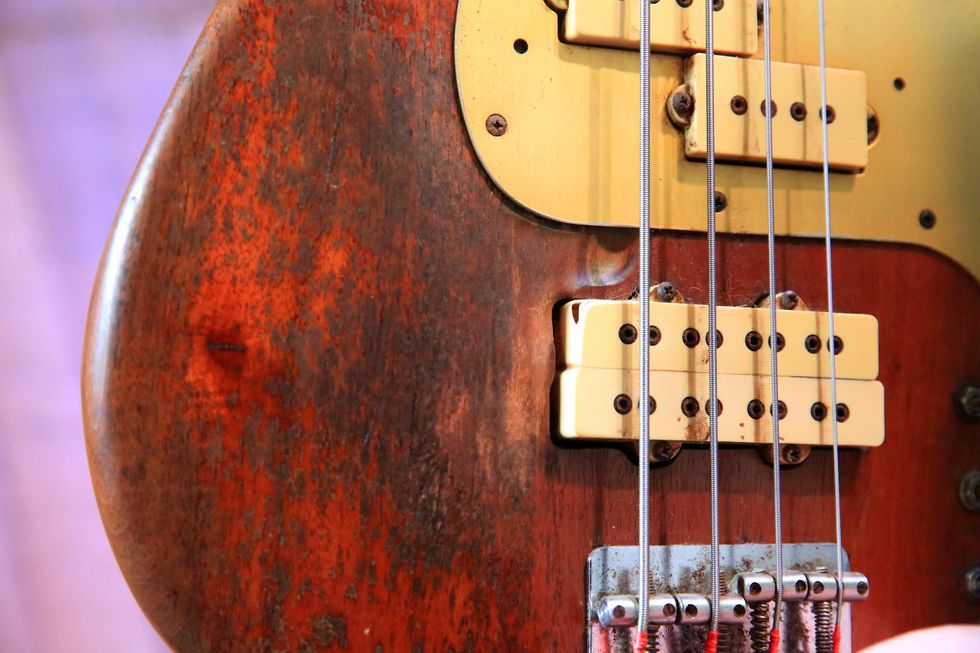
From all the years of playing it, Parks’ father worked a serious thumbprint just above the J pickup.
SG Me to 69, Please
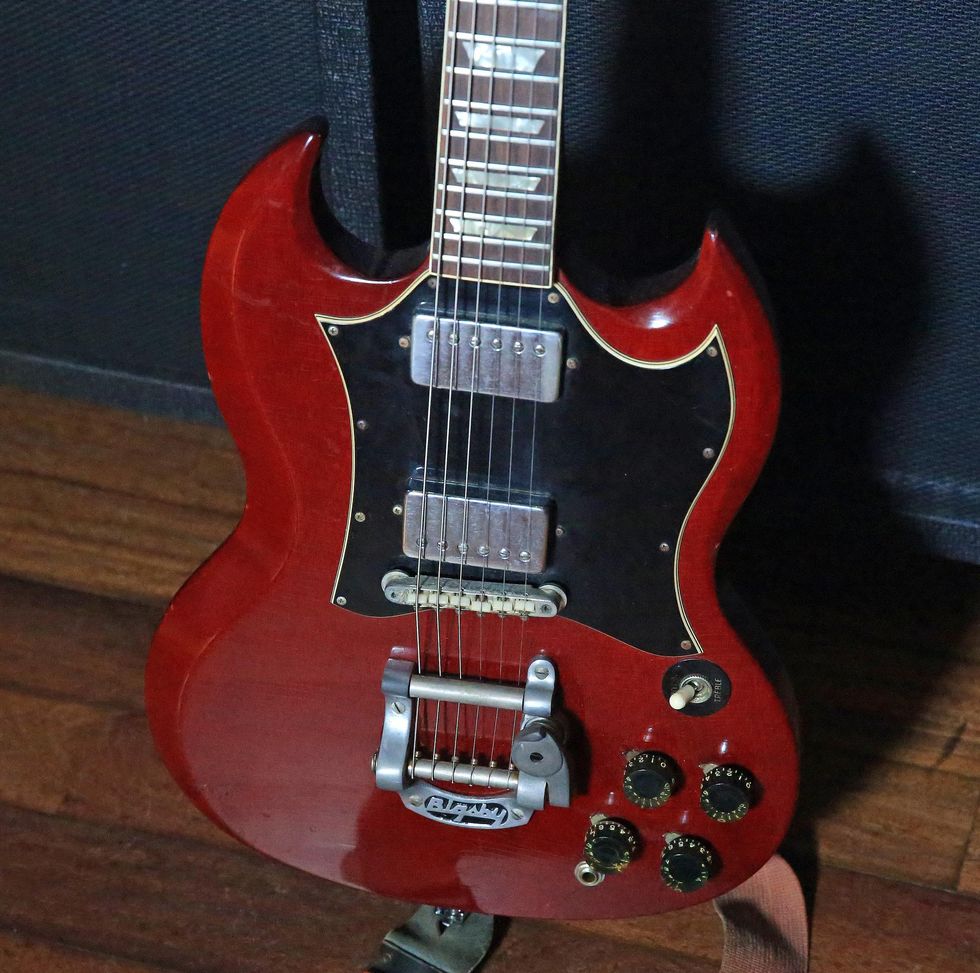
A week after Woodstock (possibly after seeing Carlos Santana rip on an SG Special), Parks’ father picked up this 1969 Gibson SG Custom (factory built with only two pickups and a Bigsby) at Hazen’s Music Store in Plattsburgh, New York. Again, being the generous father he is, he gifted it to his son.
Twin Towers
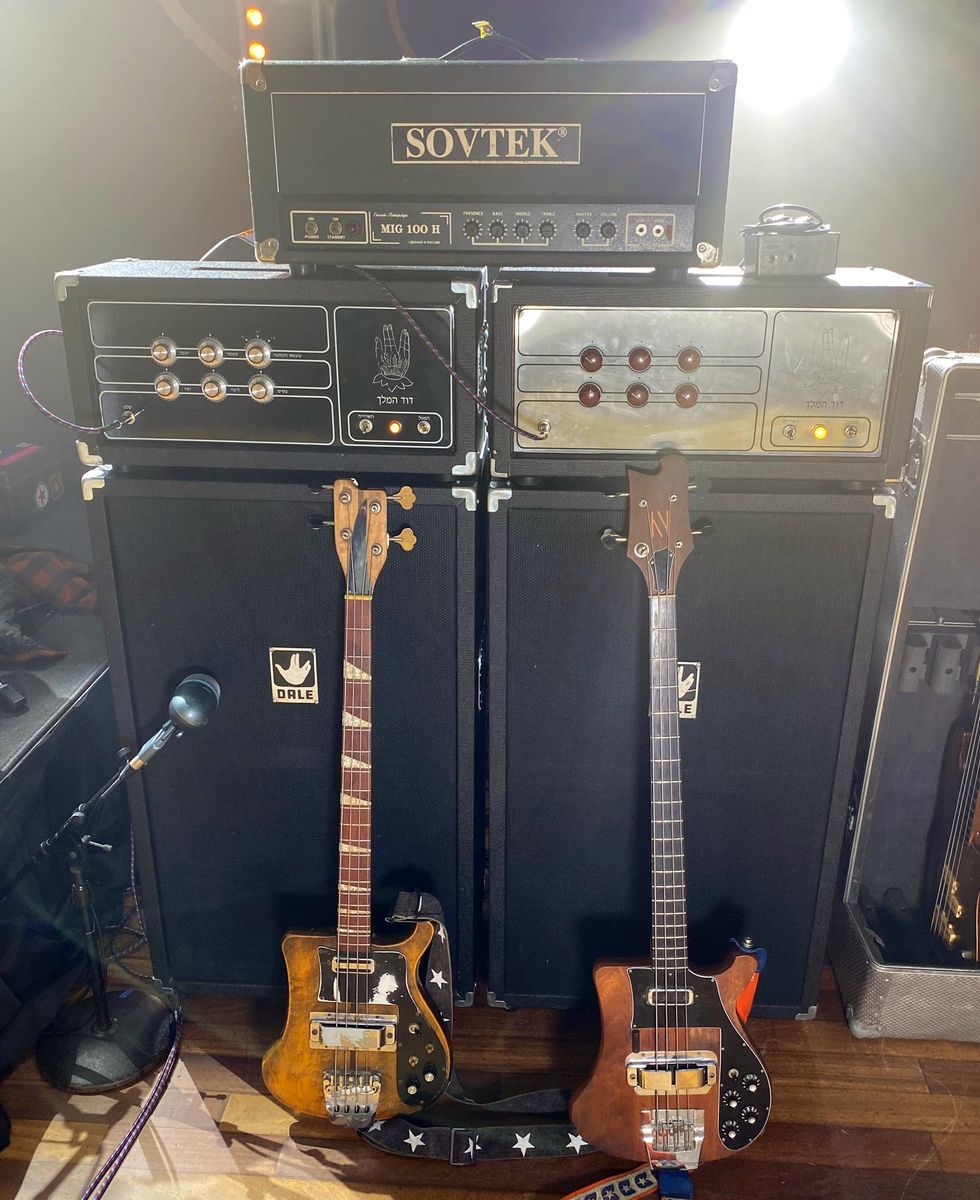
Parks’ trusts his tone to Dale, aka Elad, Shapiro, too. The clean amp (right) pumps out 120W and is loosely based on an Ampeg circuit, but uses six 6L6s (instead of KT88s) because Elad prefers “a rounder, thumpier, bluesier sound.” It has an additional midrange control and a robust transformer for a solid DI out (aiming for the Motown gold-standard tone). The left-side head is chasing the thunderous sound of a Sunn Model T. It has an added gain stage and a beefed-up power supply for more voltage, making it the ultimate companion to the doom broom. Both Dale cabinets have a single 15" speaker (below) and a pair of 12s (top). The 1980s Sovtek Mig 100H is just paperweight backup for now.
Parks' Pedal Playground
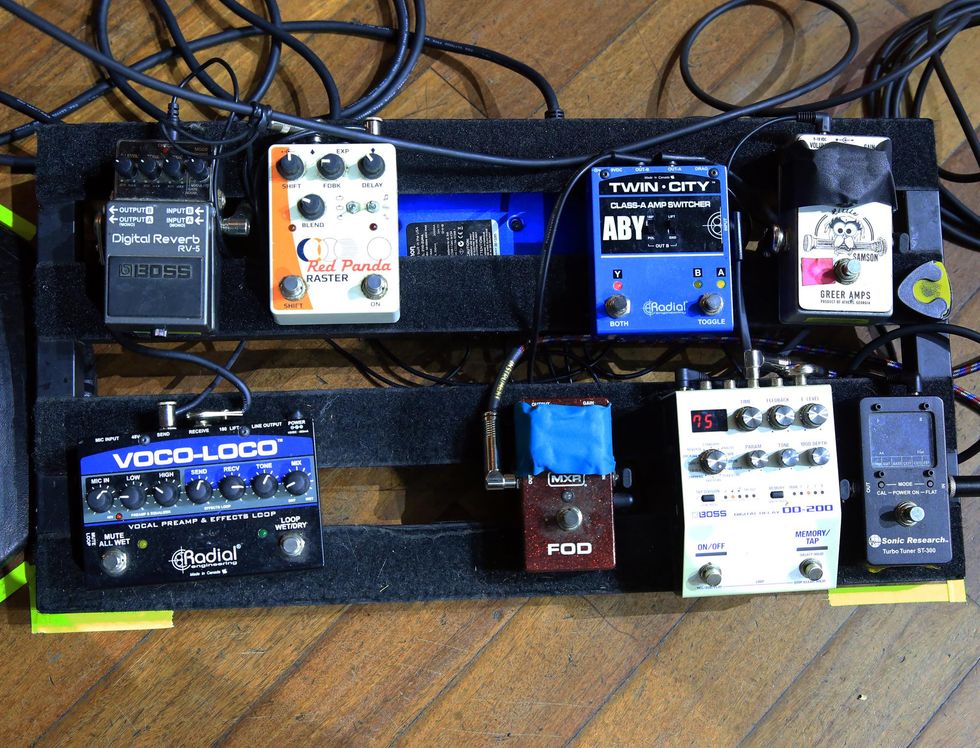
The lone survivor from our 2016 rundown is Parks’ Red Panda Raster, because of his love for its reverse-delay setting. New arrivals include a Boss DD-200 Digital Delay (used only on “Diamonds”), a Greer Little Samson, MXR FOD (hits the dirty amp), and a Boss RV-5 Digital Reverb. A Radial Twin City Active ABY Switcher controls the amps, a Radial Voco-Loco Effects Switcher colors his vocals, and a Sonic Research ST-300 Turbo Tuner keeps his instruments in line.


![Rig Rundown: All Them Witches [2021]](https://www.premierguitar.com/media-library/rig-rundown-all-them-witches-2021.jpg?id=28279952&width=1200&height=675)

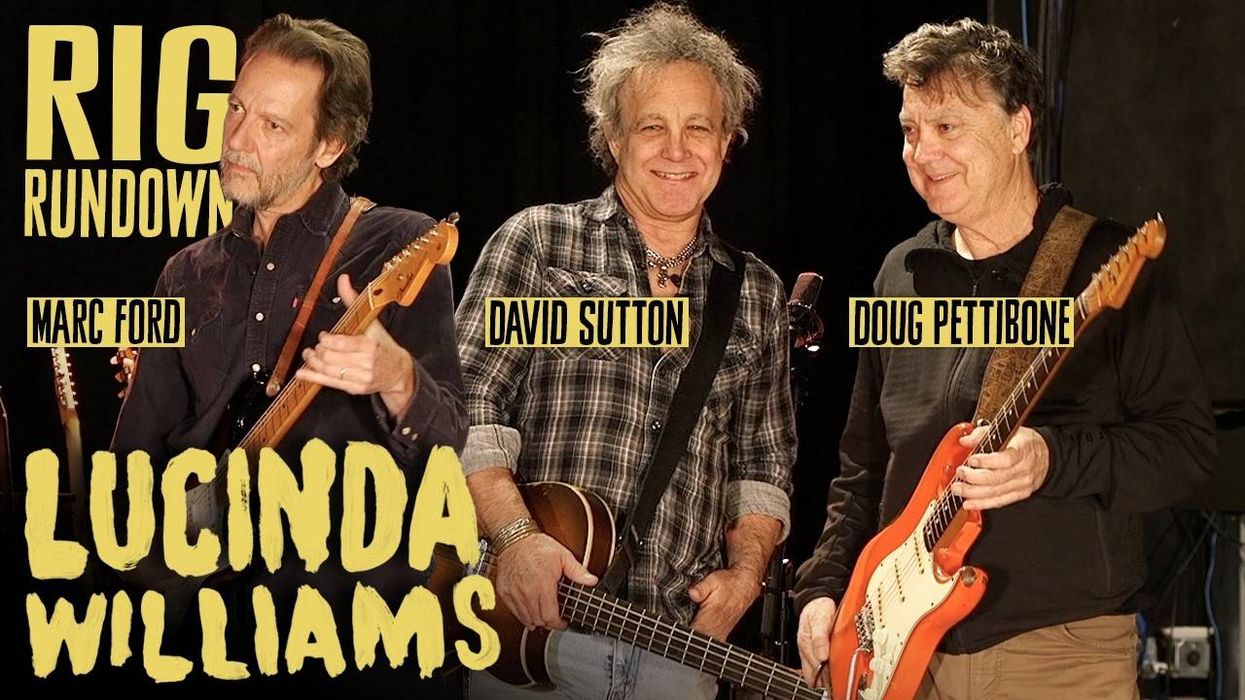
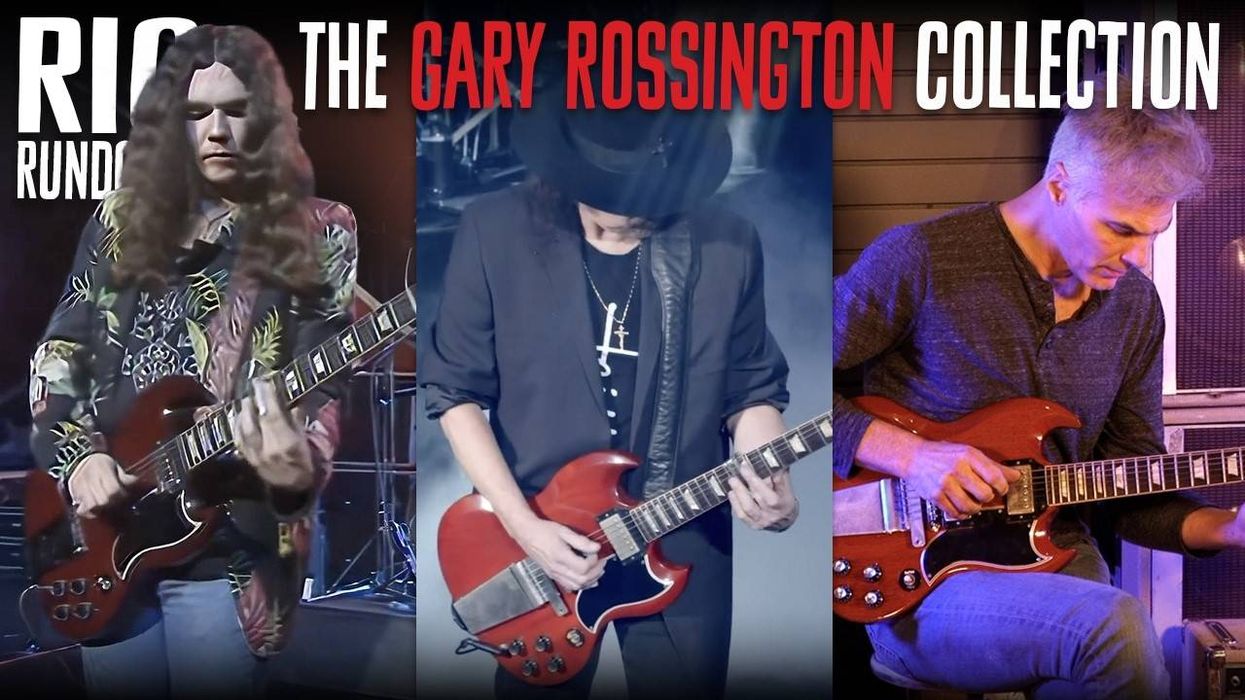
![Rig Rundown: Russian Circles’ Mike Sullivan [2025]](https://www.premierguitar.com/media-library/youtube.jpg?id=62303631&width=1245&height=700&quality=70&coordinates=0%2C0%2C0%2C0)











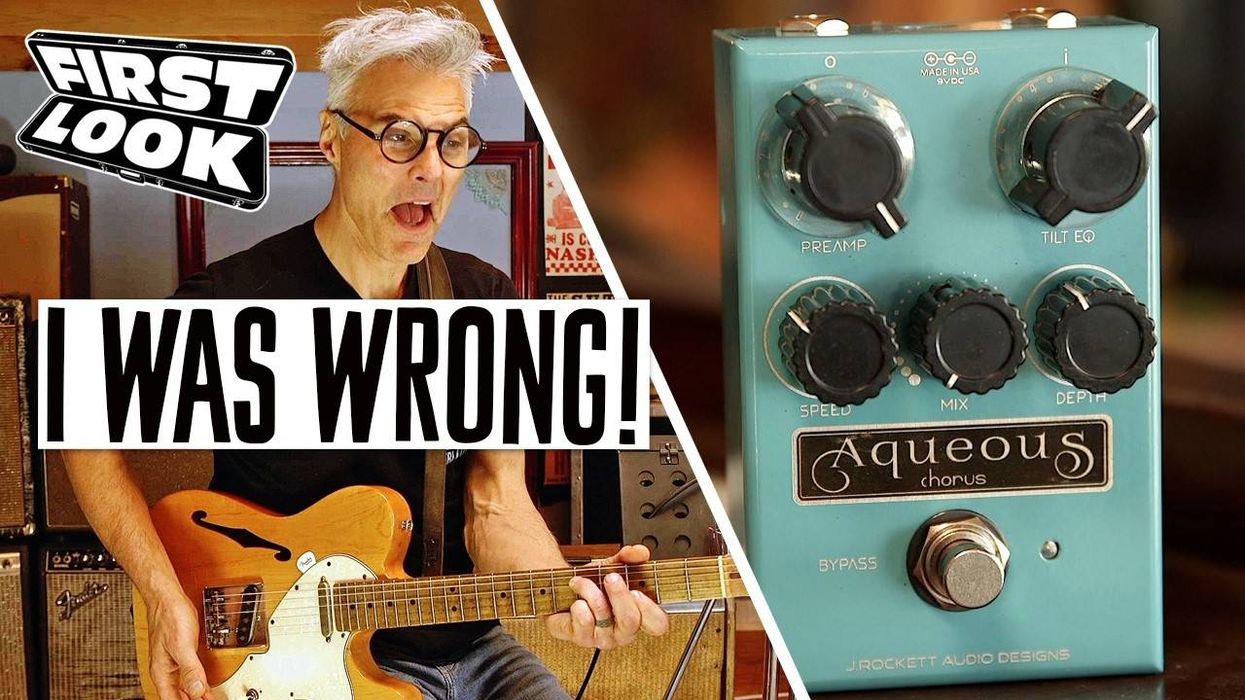
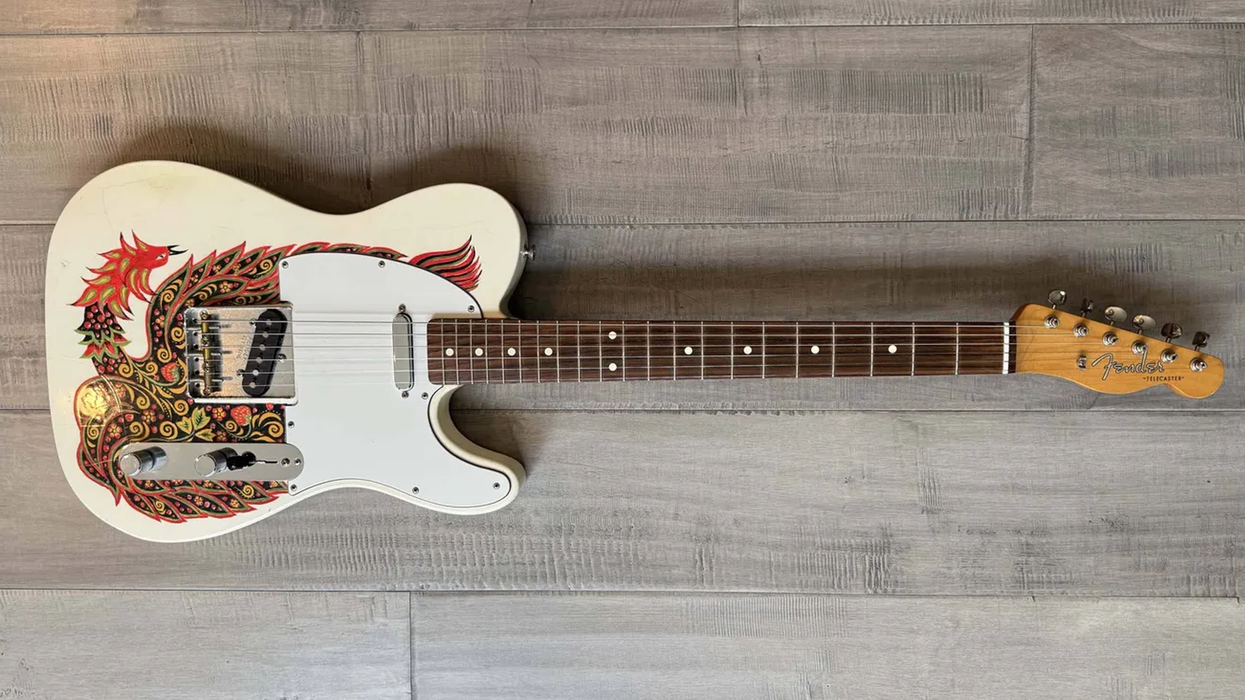
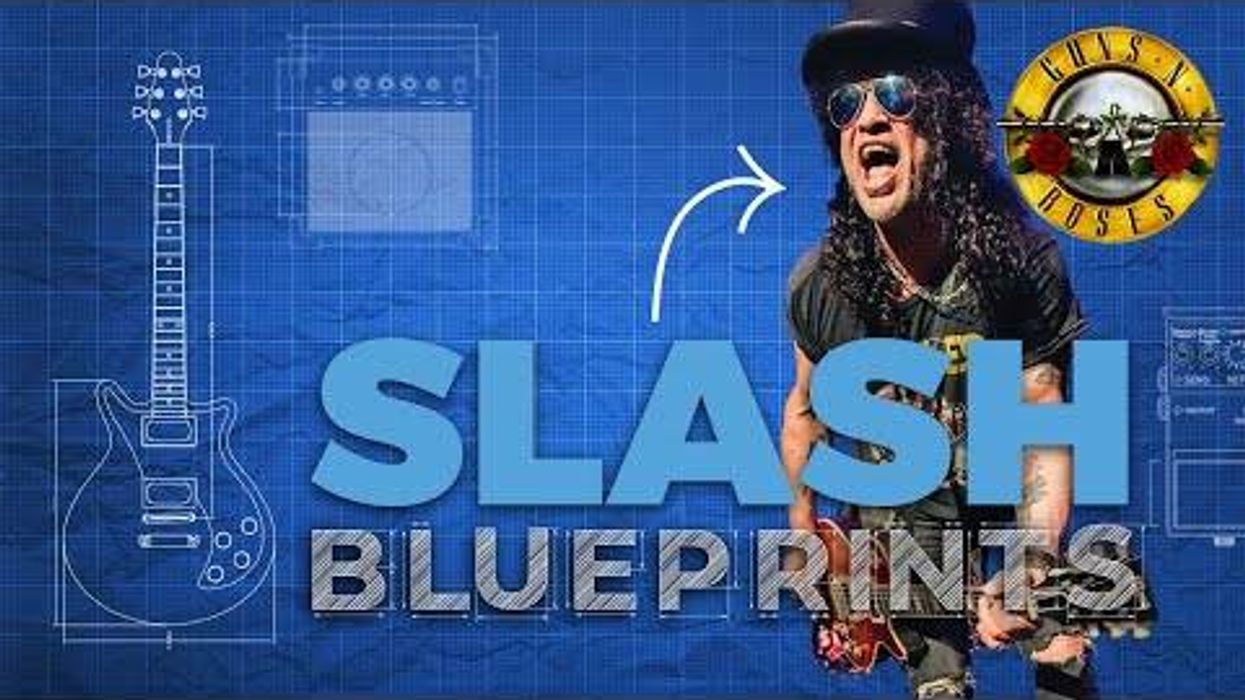

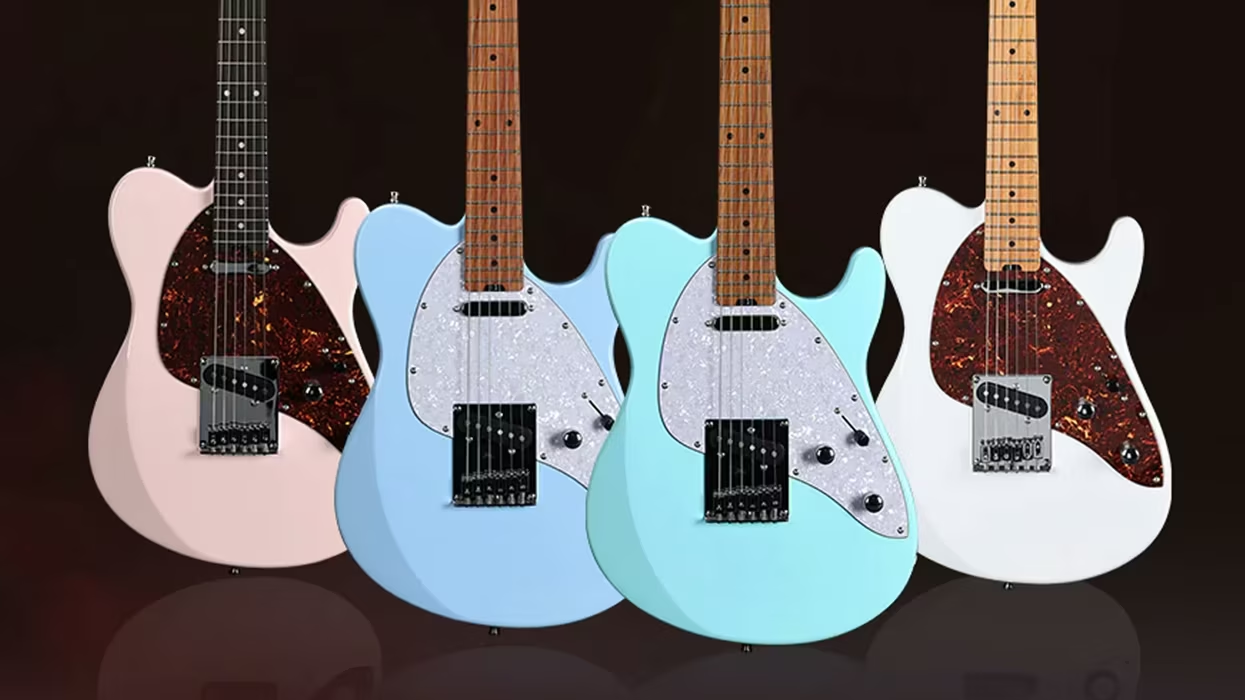


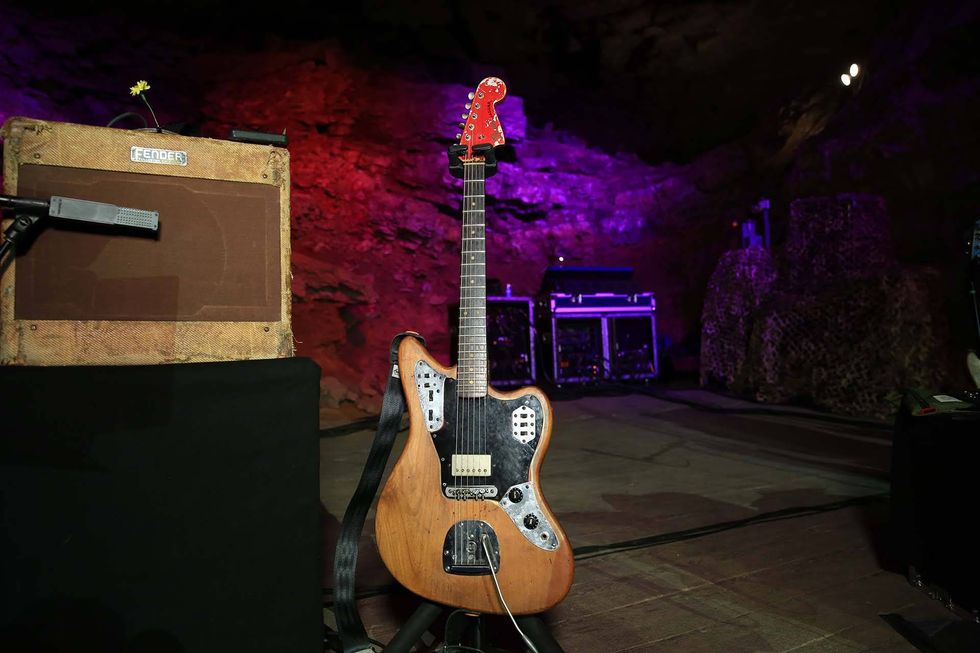
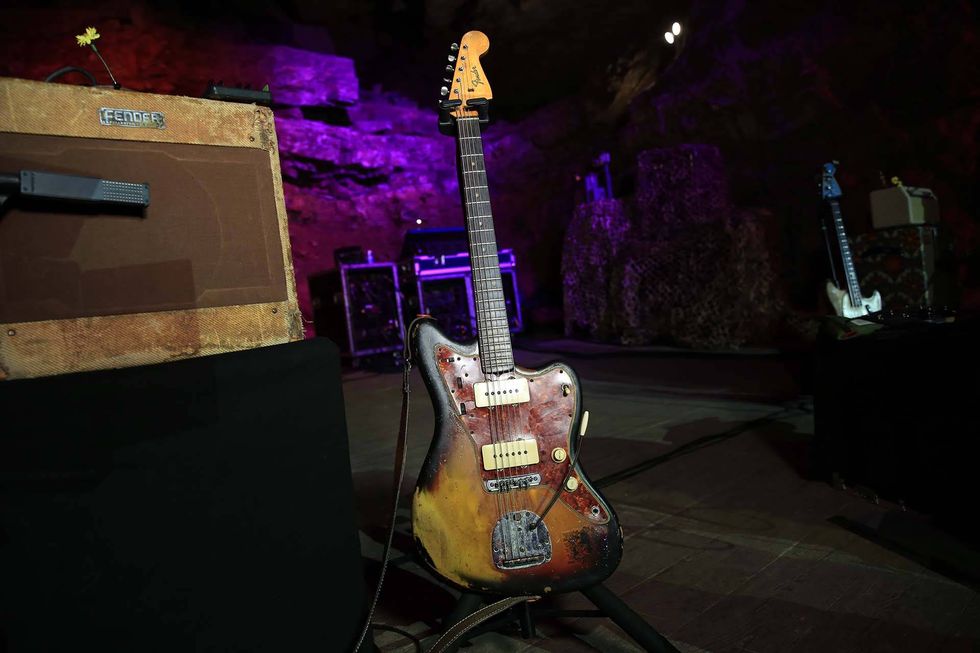
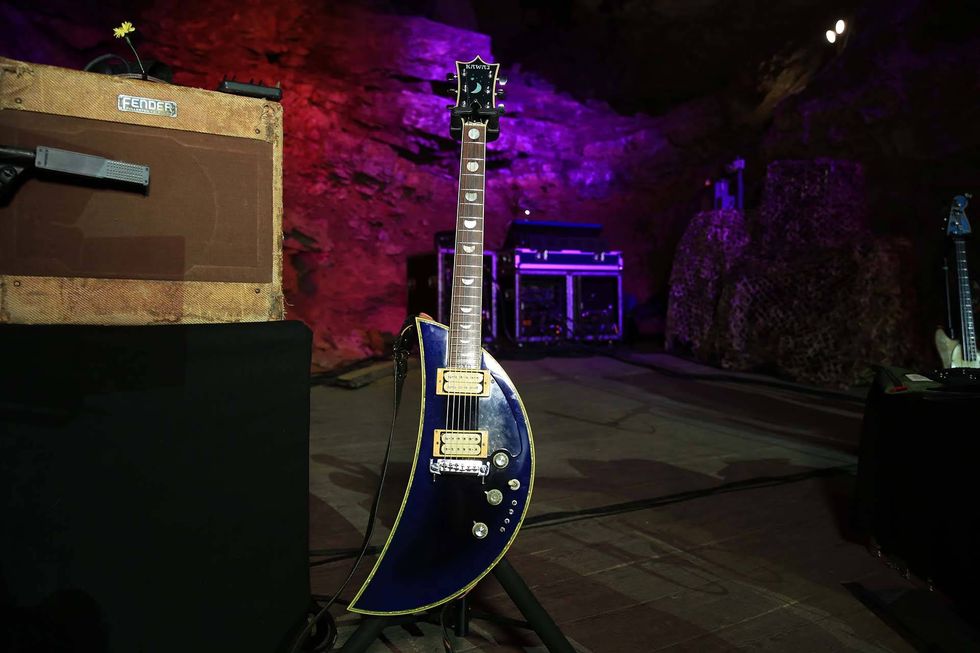
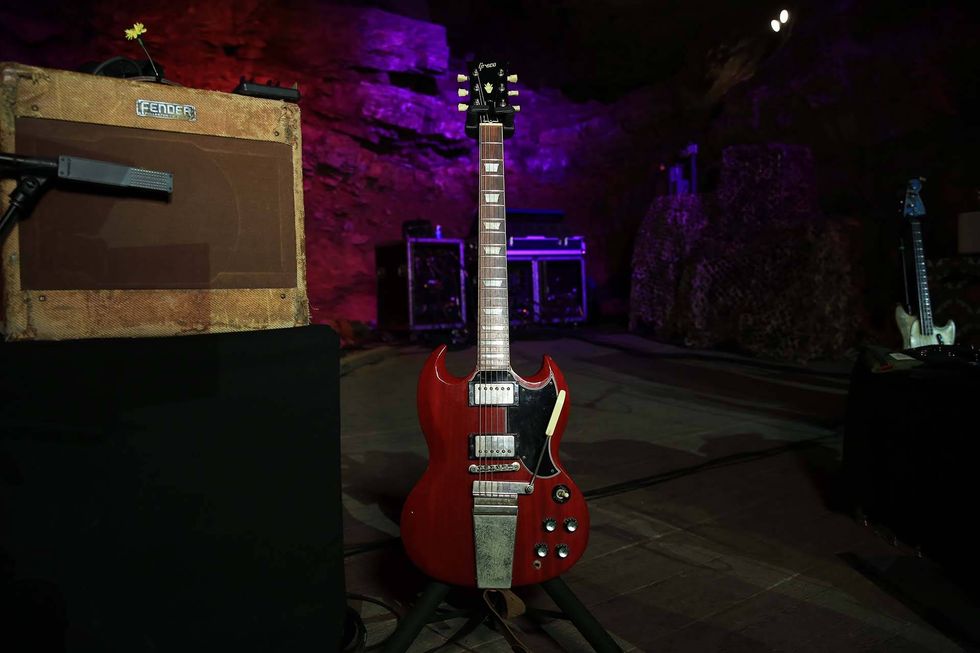
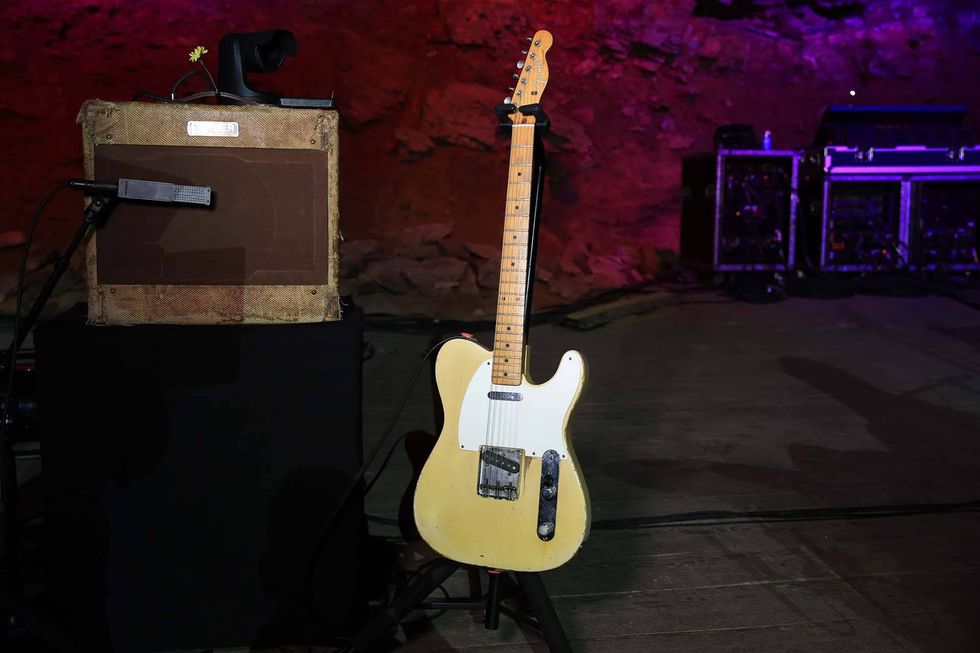
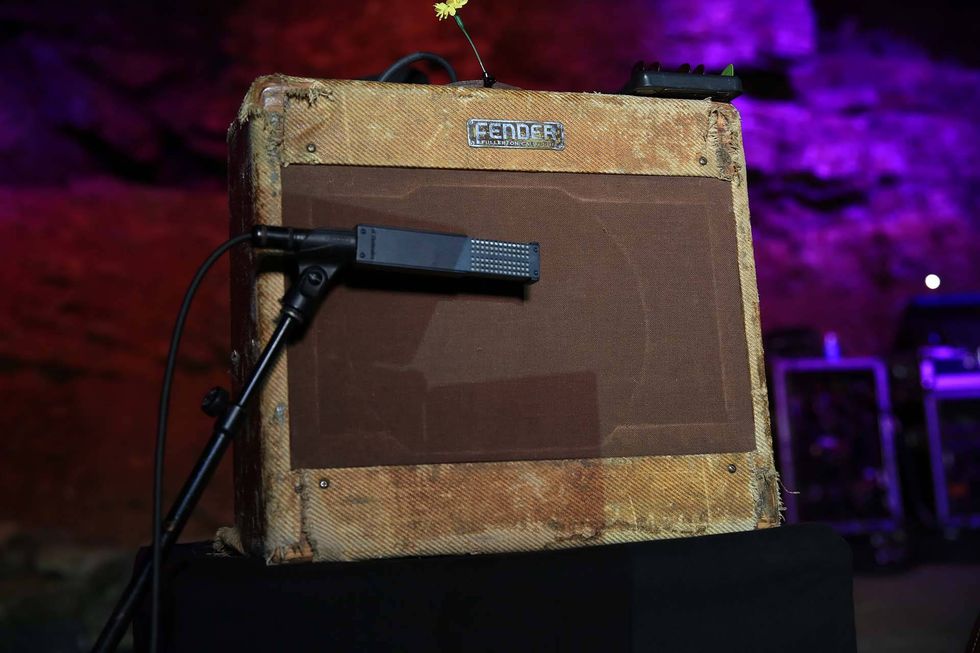
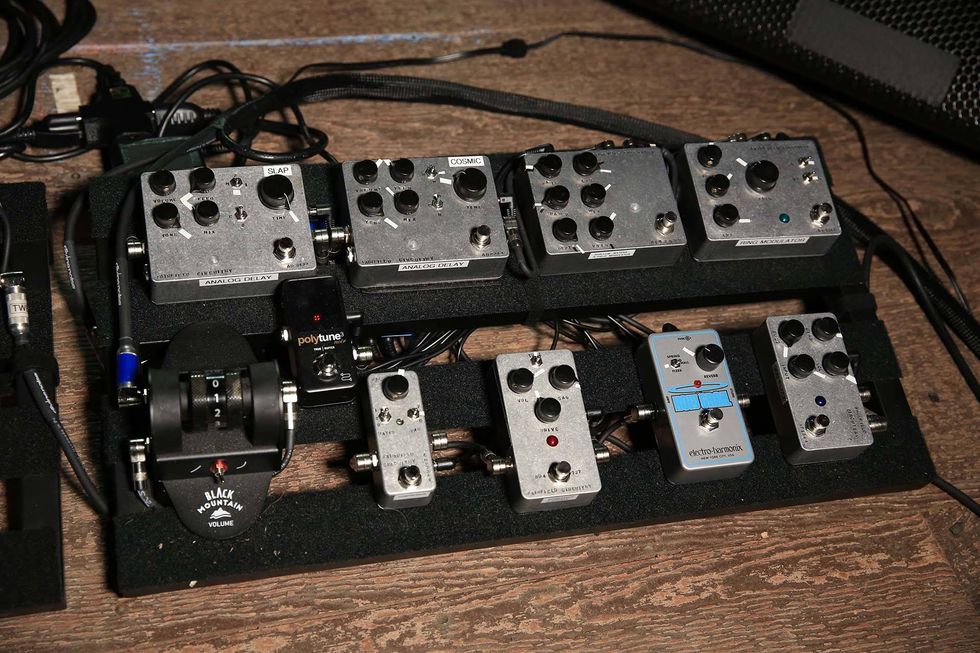
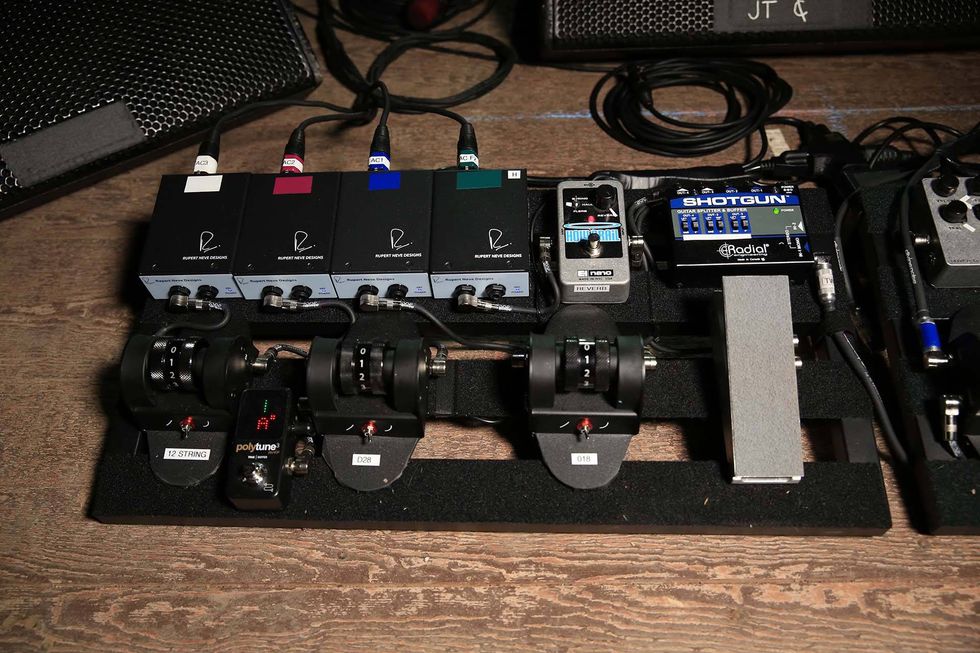

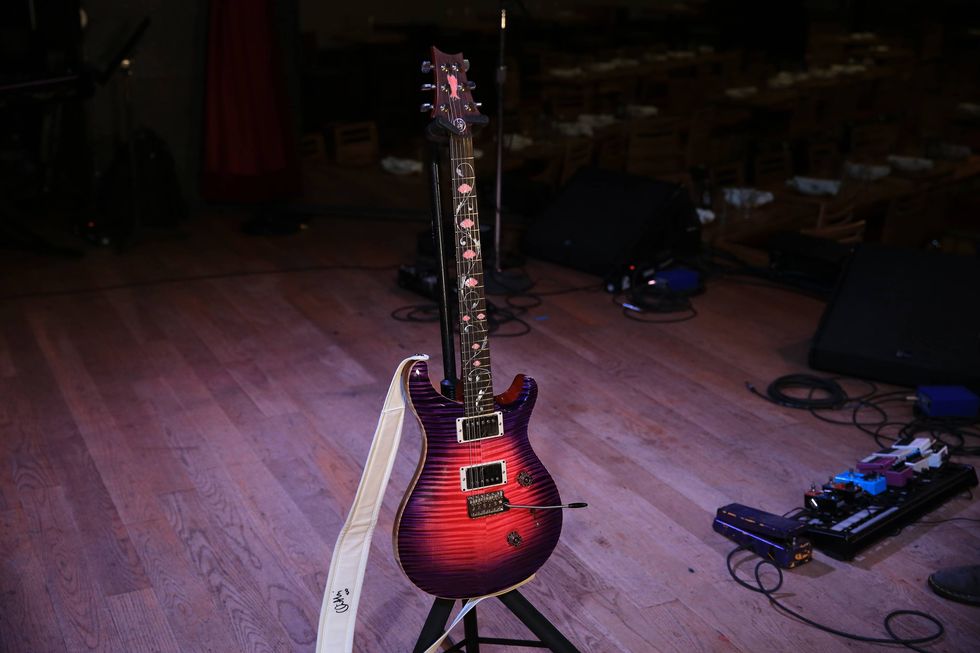
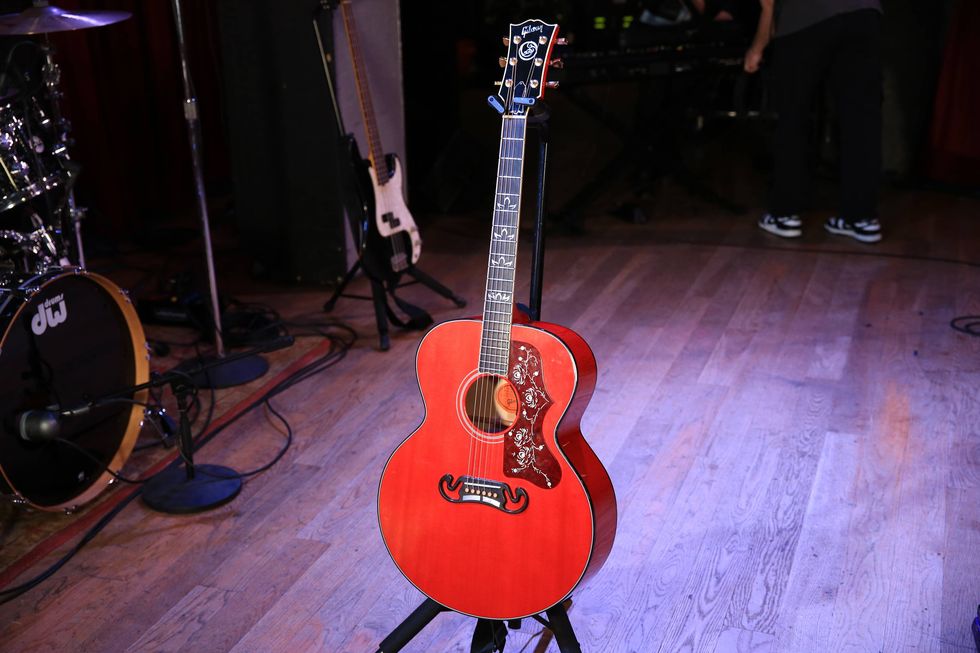
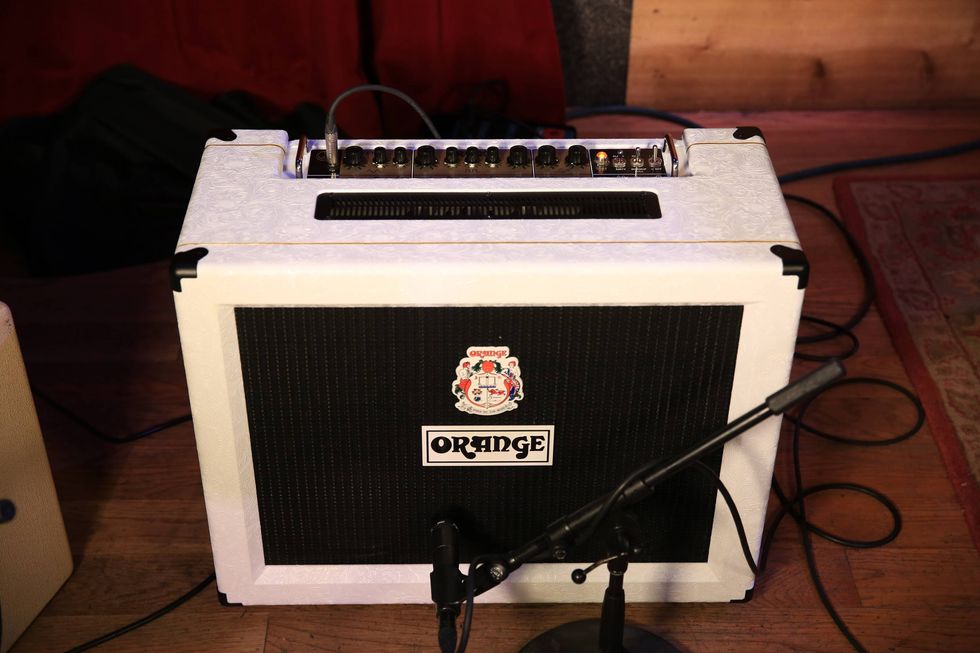
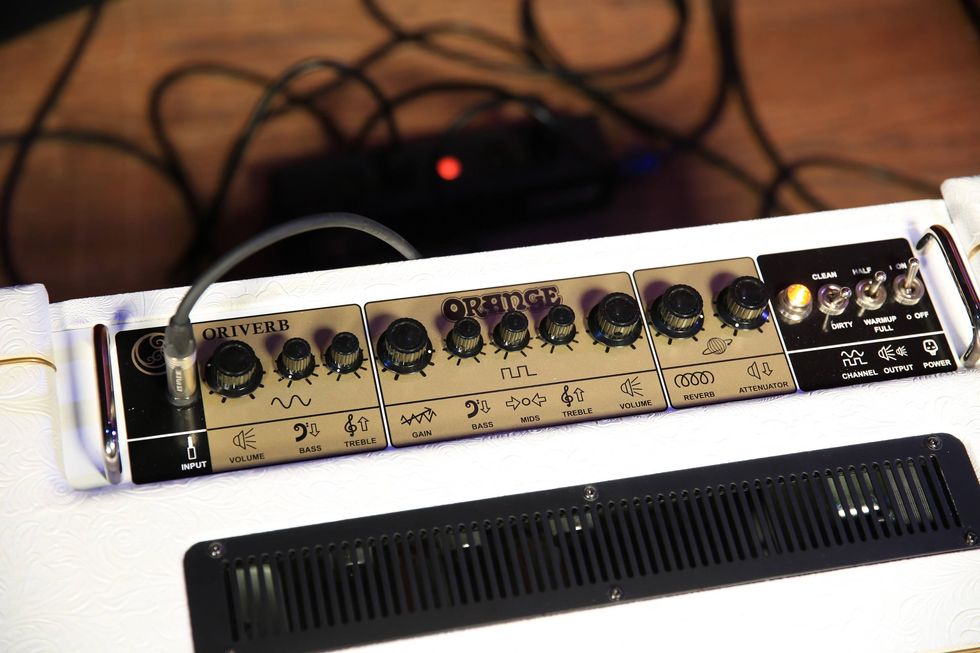
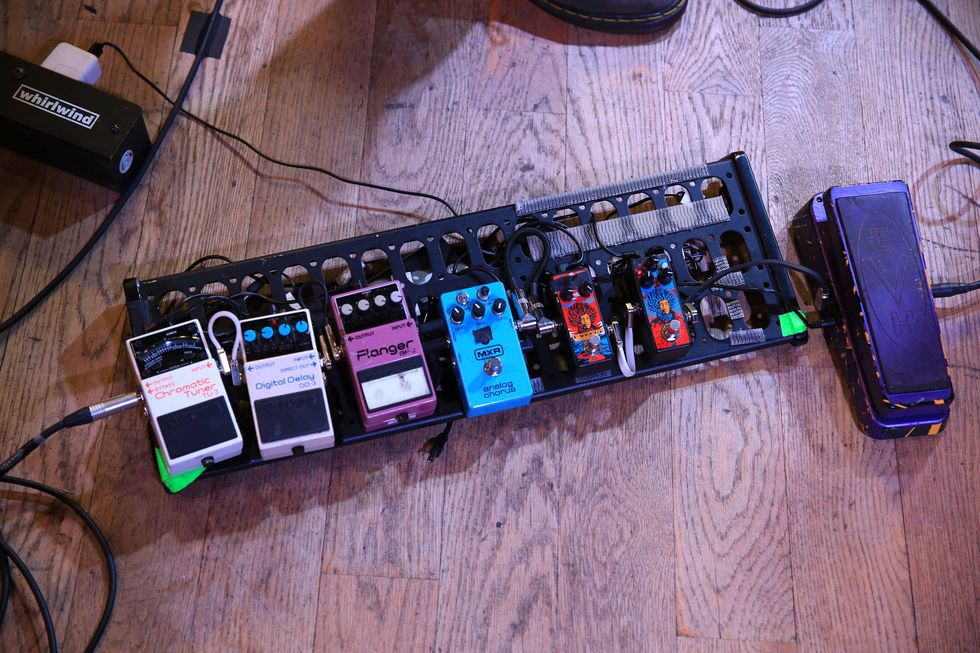

![Rig Rundown: AFI [2025]](https://www.premierguitar.com/media-library/youtube.jpg?id=62064741&width=1245&height=700&quality=70&coordinates=0%2C0%2C0%2C0)




















 Zach loves his Sovtek Mig 60 head, which he plays through a cab he built himself at a pipe-organ shop in Denver. Every glue joint is lined with thin leather for maximum air tightness, and it’s stocked with Celestion G12M Greenback speakers.
Zach loves his Sovtek Mig 60 head, which he plays through a cab he built himself at a pipe-organ shop in Denver. Every glue joint is lined with thin leather for maximum air tightness, and it’s stocked with Celestion G12M Greenback speakers.






